To get to Yerevan, Armenia we first had to get from Kazbegi to Tbilisi. The rain pelted down through the journey denying us the enchanting sights that had presented themselves on our way in. The metro took us across town to Isani and a quick taxi ride saw us back in Ortachala, where we had been dropped off on our trip from Azerbaijan. As we tried to locate the departure point for Yerevan bound marshrutkas (we learnt that they only take 5 hours as opposed to buses which take a couple of hours more and trains which take a full 14 hours!). A taxi driver managed to impose himself on the situation and escorted us to a Mercedes van parked outside, saying "Yerevan Marshrutka". Despite the improbability of this being true, we humored this notion as he made a great show of yelling across the busy road seemingly trying to get the driver of this Yerevan bound Mercedes marshrutka. After much yelling, someone showed up but he demanded a much higher figure than what we knew to be the standard fare and we refused. How he was related to the parked Mercedes, we never quite figured. Gesturing that someone was on the way and will be there in 10 minutes, the taxi driver insisted that we stay up and wait.
Meanwhile, our driver from the previous week's drive from Azerbaijan spotted us and came by to say hello to "Raj Kapoor"
. Due to his lack of English, we were unable to ask him about Yerevan. Seeing that we were restless, the taxi driver had us get into his taxi (also a Mercedes!). At this point, we should have just told him off, but we complied and he drove a few minutes down the road and stopped by the side of the highway going "Yerevan Marshrut come here today. Not the bus station". We knew that he was trying to pull something but were not sure what. We refused to get out of his taxi until the Yerevan marshrut showed up. He kept barking into his cellphone and then gesturing to us that it was on its way. By now, we were openly sceptical and let our disbelief show on our faces. Everyone was getting anxious. Something had to give. It did. The Yerevan Marshrutka actually showed up and stopped behind the taxi.
This was not a Mercedes at all, but some beaten up old heap. It looked more like a vehicle carrying fleeing refugees rather than a regular inter-country public transport. Nevertheless, it sported a placard reading EPEBAH (Russian for Yerevan) and this was reassuring
. The driver expected a higher figure and we absolutely refused and paid him the figure that we had agreed with the taxi driver. This got him angry and he started remonstrating with the taxi driver who just shrugged it off. We saw him get paid and marveled at the lengths he had gone to just to make that money. We never solved the mystery of the parked Mercedes. We were none the worse financially but were a bit put out by the taxi driver's dramatics. But things took a turn for the worse when we attempted to board the marshrutka.
There wss no room for our big packs at the back and so we had to take them inside the vehicle. M managed to find a seat in the middle of the van. The driver gestured for V to sit in front, on one of the flexible aisle seats with no headrest. Just as V resigned himself for an uncomfortable journey, the young woman seated in that row gestured to V to move to the back as there were better seats there. When V tried to move to the back (there were a few empty seats there), two women seated at the back raised their voices and motioned him back to the front
. The young woman in front said in clear English "Don't pay any attention to these people. You can sit at the back". As V tried to force his way into the back, he noticed that none of the empty seats had any room for feet. Luggage had been forced under the seat and in between the seats. V had had enough and said simply "I am getting off. I want my money back". This changed the situation dramatically as the two women scrambled quickly to vacate their seats and make room for V to sit in the back (and rest his legs on the floor!).
We reached the Armenian border in about an hour. V was still not happy with the seating arrangement and wanted to explore other options inside Armenia, possibly a change of vehicle or simply getting off in the nearest town to stay the night. The women at the back revealed that they were not just paying travelers by saying "No money back!". M brokered a truce by swapping seats with V. By then M had learnt that the American seated next to her had just arrived in Tbilisi earlier in the day along with his two sisters (who were also in the van) and they had waited for 2 hours for this marshrutka to leave from the bus station
. The trio were on a monumental quest to seek long lost family in Armenia. Their father had left the conflict ridden country in 1914 and come to America. We listened to their story (from brother and sisters) through the rest of the journey. They, in turn, expressed great interest in our journey and we managed to exchange our stories during the five hour journey to Yerevan. But their immediate pressing concern was lack of legroom and the siblings swapped seats till they were reasonably free of discomfort.
V recounted a joke that he had read that went "Azerbaijan has oil. Armenia has Kerkorian". This tickled the Armenian Americans but also aroused the curiosity of the bossy woman at the back. Her English was not good enough to understand the joke but she was curious about what was being said about her country (we had learnt that she was Armenian). She suddenly stopped all the conversation by claiming that she had not slept for 2 nights and could everybody please be quiet so she can get some rest? If you please! At some point she even protested when the young woman in front (who said she was a tourist from Persia!) spoke into her cell phone
. This seemed a hell of a way to run a transport service between two countries. Deny paying customers room so you can pack the floor with your own stuff and then ask them to shut up so you can sleep.
All Armenian names seem to end with the syllable -ian (sometimes spelt -yan). Famous names from the tennis world incude Agassi (whose father dropped the -ian) and Nalbandian. During the past week in Georgia, we had managed to make out a few vowels and consonants in the squiggly Georgian script by reading the destination boards on marshrutkas. But the Armenian script proved more difficult to grasp due to a couple of factors. First, some of the characters resembled English characters that stood for something entirely different. Second, the addition of a tiny mark near the edge of a character completely changed it into something unrelated. This seemed like a totally dangerous script and probably causes a lot of misunderstanding, wars, divorces etc. Later at a monastery, we learnt that this aspect was well used by the Armenians to "bore" invading Mongols into thinking that the message carved on the church walls was not worth destroying
. A very intriguing example of defensive adaptation.
On arrival, we were struck by the vodka factory outside the Kilikia bus station, the taxi driver's use of a familiar word (one 'hazaar' dram to go to the Opera house), the well lit Matenadaran museum on top of the hill beneath the statue of Mother Armenia with sword on an even higher hill. We got to visit the museum later on a rainy morning and enjoyed the rare manuscripts from centuries ago as well antique maps that revealed Armenia's history and provided a context for their troubled history (more on this later in this blog). The plentiful statues seen around the city possess sad expressions, but its citizens seem to enjoy their vibrant city with its many pleasures. The trendy Abovian Poghots feature top name brands from all over and Yerevanians seem to wear those fashions well. The compact city surrounded by mountains seems smaller compared to Tbilisi. The use of pink stone in most buildings in the city centre is a distinctive feature that was imposed by Tumanyan, the architect of its revival
. The government buildings around the expansive Republic square sport this "pink city" appearance quite prominently, sometimes looking like they were digitally pixelated with alternating hues of pink. We had the happy experience of being mobbed by Armenian school children practicing their English skills on us just outside the museum by the square.
The vast flight of stone steps and flower beds known as the Cascade needs special mention. We have not seen anything like it anywhere else. The steps lead upto a monument for the 50th anniversary of Soviet Armenia that was never completed. By the side of the steps is an indoor area comprising of several art galleries, all of them connected via a series of escalators and elevators. We got ourselves a rain soaked Yerevan panorama from the top of the Cascade.
We made a record of sorts in Yerevan by staying six nights at Anahit Stepanyan's guest house. The previous record was five nights in Tbilisi
. Armenia is small enough that most sights can be seen as day trips from the capital which is centrally located. Its lower elevation results in a comfortable climate compared to the much colder surrounding mountainous regions. Country roads are incredibly curvy, twisting and bending over steep hills. Motion sickness is a very common ailment in these parts and you are well advised to sit in front and watch the road. Our host, Anahit spoke very good English and treated guests like family. She has strong views on places to visit and will promptly pick up the phone to call and make arrangements even before you request her. And scold you firmly if you head out without a jacket or if you chose an expensive option when a cheaper one was available. She would not let us visit Echmiadzin Cathedral on any other day but Sunday.
We also enjoyed a little alternative cuisine in Yerevan compared to our recent history and this was mostly due to the excellent Sayat Cafe on Sayat-Nova street. We made no less than four trips there to enjoy manayeeshes, lamajoons, falafel and hummus
. But we did get a rude shock at Caucasus Cafe which seemed to be hugely popular with locals. As soon as we entered, the young woman at the door said "Nyeto" and pointed towards the restaurant on the opposite side and then laughed at our astonished expressions. There are so many ways to let a visitor know that you cannot serve them for any reason but she picked the least civilized.
The statue of Aram Khachaturian (composer of the barbaric "Sabre Dance") in front of the Opera House/National Philharmonic reminded us of the country's musical pedigree. Choice is plentiful and we got to go to a wonderful concert of Chamber Music featuring the dynamic Piano Quintet in E Flat by Schumann. Levon Chilingarian played the violin and we got seats in the front row flanked by the ambassadors from the UK and USA and their young children. As if that was not enough, we spent another evening at a jazz concert by a large band playing mostly American favorites. The venue was the hall on top of the above mentioned Cascade
.
Armenians seem to view their country as the centre of the world (maybe not as much as China does) and pride themselves on being the first Christian nation. They have closed borders with hostile Azerbaijan to the west and Turkey to the east. The Nagarno-Karabakh war saw horrific ethnic cleansing on both sides and left behind an unrecognized republic (NKR) that sees itself as independent. Armenia considers it another province (called Artsakh), while the world recognizes it as part of Azerbaijan. Armenia's relationship with Turkey is dominated by the genocide issue. The genocide museum just outside the city presents the visitor with photographs, newspaper cuttings and books written by neutrals on the genocide. But they do have friendly relations with neighbours Georgia and Iran and with distant USA and Russia (which is quite a collection!). The Blue Mosque on Mashtots street is like a little Iran on the inside.
The Matenadaran museum had some very interesting exhibits
. Our curiosity about the relationship between Azerbaijan, Armenia and Turkey has intensified during this trip and we got a factoid from a couple of displays in this museum on Armenia's view of Azerbaijan. The first one was titled "The Map of Armenia, Arran and Azerbaijan" and quoted the 10th century Iranian geographer Istakhri from his "The Book of Roads and Realms". It casually mentions (without comment) that the Azerbaijan referred to in the book is a province of Iran. In a neighbouring display based on Delisle's 1730 "Atlas Nouveau", this is reiterated and in addition the following text is added "the present-day Republic of Azerbaijan can be found divided into various Muslim Khanates Shamakhi, Shirwan and Derbend. In 1918, this same region was renamed Azerbaijan". Other exhibits in the museum of interest to us included old Indian manuscripts on palm leaves (V remembered seeing similar manuscripts at his grandfather's house during his childhood), geometric diagrams from Abu Ali Ibn Sina's 1037 book Kitab-al-Najat, beautifully colored pages from antique gospel books and history books, philosophical treatises, Alphabets of ancient and medieval nations, Euclid's "Elements of Geometry", a 12th century Armenian guidebook to names of Indian cities, Ptolemy's "Geography", a Persian manuscript on Religious Sects of India, a 1617 diagram on how to measure latitude and so on. V's beloved home city of Madras featured prominently in several displays - the young woman patrolling that room kindly allowed V to take photographs of these after he explained the reason for his interest.
Google Maps Link
The Pink Capital of Armenia
Friday, October 26, 2012
 Yerevan, Yerevan, Armenia
Yerevan, Yerevan, Armenia
Other Entries
-
70Back to Bishkek
Sep 2333 days prior Bishkek, Kyrgyzstanphoto_camera0videocam 0comment 5
Bishkek, Kyrgyzstanphoto_camera0videocam 0comment 5 -
71Almaty
Sep 2630 days prior Almaty, Kazakhstanphoto_camera16videocam 0comment 1
Almaty, Kazakhstanphoto_camera16videocam 0comment 1 -
72Day Trip To Turkistan
Sep 2828 days prior Shymkent, Kazakhstanphoto_camera8videocam 0comment 1
Shymkent, Kazakhstanphoto_camera8videocam 0comment 1 -
73The Border Crossing You Dont Want To Repeat
Sep 2927 days prior Tashkent, Uzbekistanphoto_camera5videocam 0comment 4
Tashkent, Uzbekistanphoto_camera5videocam 0comment 4 -
74Some History Lessons
Oct 0224 days prior Tashkent, Uzbekistanphoto_camera5videocam 0comment 2
Tashkent, Uzbekistanphoto_camera5videocam 0comment 2 -
75From Slave Market to Museum
Oct 0422 days prior Khiva, Uzbekistanphoto_camera14videocam 0comment 1
Khiva, Uzbekistanphoto_camera14videocam 0comment 1 -
76How Much Renovation is Just Right?
Oct 0620 days prior Bukhara, Uzbekistanphoto_camera32videocam 0comment 3
Bukhara, Uzbekistanphoto_camera32videocam 0comment 3 -
77Timur Land
Oct 0917 days prior Samarkand, Uzbekistanphoto_camera28videocam 0comment 1
Samarkand, Uzbekistanphoto_camera28videocam 0comment 1 -
78Goodbye To The 'Stans
Oct 1016 days prior Tashkent, Uzbekistanphoto_camera6videocam 0comment 2
Tashkent, Uzbekistanphoto_camera6videocam 0comment 2 -
79Still In Asia Or Is This Europe?
Oct 1313 days prior Baku, Azerbaijanphoto_camera28videocam 0comment 1
Baku, Azerbaijanphoto_camera28videocam 0comment 1 -
80Foothills Of The Caucasus Mountains
Oct 1412 days prior Lahic, Azerbaijanphoto_camera16videocam 0comment 2
Lahic, Azerbaijanphoto_camera16videocam 0comment 2 -
81Vikings Originally Came From Azerbaijan?
Oct 1610 days prior Sheki, Azerbaijanphoto_camera13videocam 0comment 1
Sheki, Azerbaijanphoto_camera13videocam 0comment 1 -
82An Azerbaijani Family
Oct 1610 days prior Sheki, Azerbaijanphoto_camera0videocam 0comment 3
Sheki, Azerbaijanphoto_camera0videocam 0comment 3 -
83A Change of Faith
Oct 197 days prior Tbilisi, Georgiaphoto_camera16videocam 0comment 3
Tbilisi, Georgiaphoto_camera16videocam 0comment 3 -
84Dzhugashvili and Svetitskhoveli
Oct 206 days prior Gori, Georgiaphoto_camera17videocam 0comment 2
Gori, Georgiaphoto_camera17videocam 0comment 2 -
85A Border Runs Through It
Oct 215 days prior Davit Gareja, Georgiaphoto_camera15videocam 0comment 2
Davit Gareja, Georgiaphoto_camera15videocam 0comment 2 -
86In the Greater Caucasus Mountains
Oct 233 days prior Qazbegi, Georgiaphoto_camera15videocam 0comment 1
Qazbegi, Georgiaphoto_camera15videocam 0comment 1 -
87The Pink Capital of Armenia
Oct 26 Yerevan, Armeniaphoto_camera22videocam 0comment 2
Yerevan, Armeniaphoto_camera22videocam 0comment 2 -
88Colors Of The North - Dilijan and Lake Sevan
Oct 271 day later Dilijan, Armeniaphoto_camera14videocam 0comment 2
Dilijan, Armeniaphoto_camera14videocam 0comment 2 -
89The Armenian Apostolic Church
Oct 282 days later Echmiadzin, Armeniaphoto_camera13videocam 0comment 0
Echmiadzin, Armeniaphoto_camera13videocam 0comment 0 -
90Two Monasteries And A Winery
Oct 293 days later Areni, Armeniaphoto_camera9videocam 0comment 0
Areni, Armeniaphoto_camera9videocam 0comment 0 -
91Tatev (Give Me Wings)
Oct 304 days later Goris, Armeniaphoto_camera10videocam 0comment 0
Goris, Armeniaphoto_camera10videocam 0comment 0 -
92The Nagarno Karabakh Republic
Oct 315 days later Stepanakert, Azerbaijanphoto_camera18videocam 0comment 2
Stepanakert, Azerbaijanphoto_camera18videocam 0comment 2 -
93Homer in Turkish
Nov 016 days later Tbilisi, Georgiaphoto_camera1videocam 0comment 1
Tbilisi, Georgiaphoto_camera1videocam 0comment 1 -
94From Caspian Sea To Black Sea
Nov 038 days later Batumi, Georgiaphoto_camera11videocam 0comment 1
Batumi, Georgiaphoto_camera11videocam 0comment 1 -
95A Short Distance, But A World Apart
Nov 049 days later Trabzon, Turkeyphoto_camera16videocam 0comment 1
Trabzon, Turkeyphoto_camera16videocam 0comment 1 -
96Rock-cut Tombs and a Deep Valley
Nov 0611 days later Amasya, Turkeyphoto_camera11videocam 0comment 3
Amasya, Turkeyphoto_camera11videocam 0comment 3 -
97Cold and Rainy in the Capital
Nov 0813 days later Ankara, Turkeyphoto_camera14videocam 0comment 4
Ankara, Turkeyphoto_camera14videocam 0comment 4 -
98Ottoman Architecture and Computer Architecture
Nov 1015 days later Safranbolu, Turkeyphoto_camera15videocam 0comment 2
Safranbolu, Turkeyphoto_camera15videocam 0comment 2 -
99Fairy Chimneys and Whirling Dervishes
Nov 1217 days later Goreme, Turkeyphoto_camera26videocam 0comment 6
Goreme, Turkeyphoto_camera26videocam 0comment 6 -
100Turquoise Coast
Nov 1520 days later Fethiye, Turkeyphoto_camera18videocam 0comment 2
Fethiye, Turkeyphoto_camera18videocam 0comment 2 -
101Aphrodisias
Nov 1722 days later Geyre, Turkeyphoto_camera21videocam 0comment 6
Geyre, Turkeyphoto_camera21videocam 0comment 6 -
102Hierapolis
Nov 1823 days later Pamukkale, Turkeyphoto_camera22videocam 0comment 2
Pamukkale, Turkeyphoto_camera22videocam 0comment 2 -
103Ephesus - Three in a row!
Nov 1924 days later Selcuk, Turkeyphoto_camera25videocam 0comment 3
Selcuk, Turkeyphoto_camera25videocam 0comment 3 -
104Smyrna - Running on empty and a wild goose chase
Nov 2025 days later İzmir, Turkeyphoto_camera16videocam 0comment 1
İzmir, Turkeyphoto_camera16videocam 0comment 1 -
105Finally in Istanbul!
Nov 2126 days later Istanbul, Turkeyphoto_camera23videocam 0comment 1
Istanbul, Turkeyphoto_camera23videocam 0comment 1
Comments
2025-05-22
Comment code: Ask author if the code is blank

 Yerevan, Yerevan, Armenia
Yerevan, Yerevan, Armenia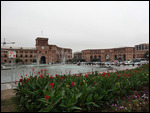

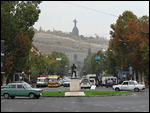
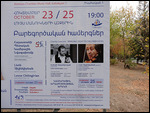
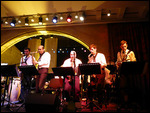

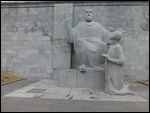
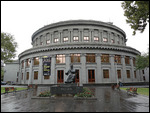
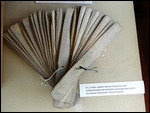
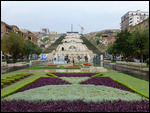
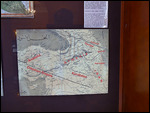







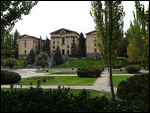
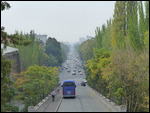
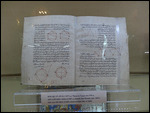
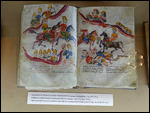
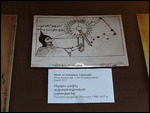
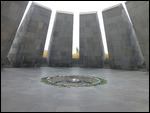
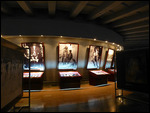
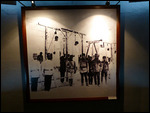
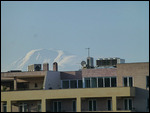
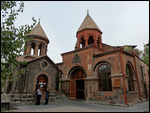
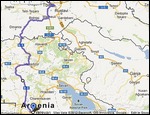
Ramesh
2012-11-12
Lovely post on a whole variety of things - commend your energy to set this to paper (OK bytes) even at the end of a long tiring day.
V's stiff legs and "pouty face" can be well imagined. And what is the connection between Madras and a museum in Armenia ??
parleusted
2012-11-12
@Ramesh : Madras and Calcutta feature in the list of world cities where the Armenian diaspora once lived. Madras' Georgetown still has an Armenian Street. But no Armenians live there anymore. Not much is known about their arrival/departure.